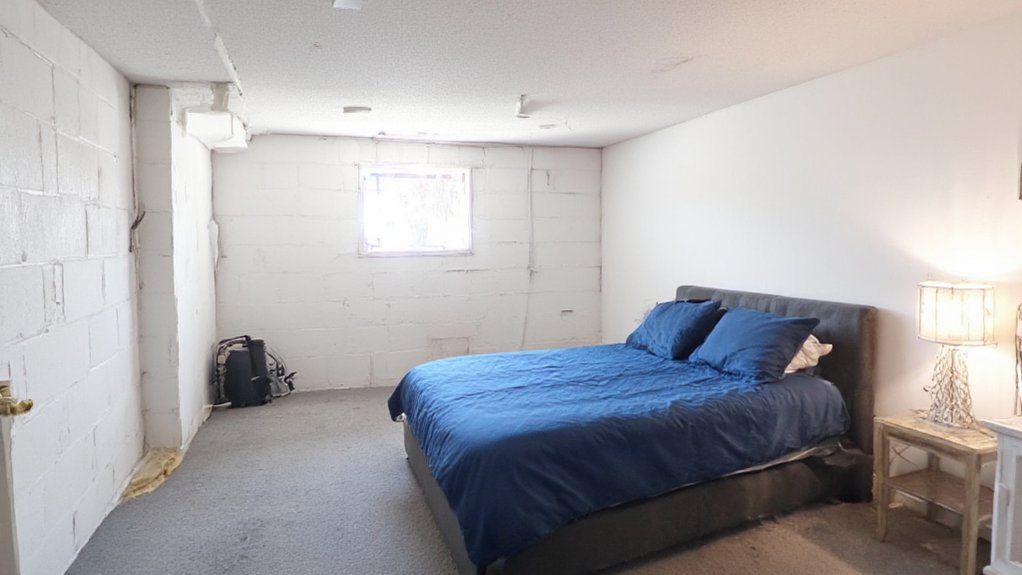Hey, you’ve got a basement just begging to be a cozy bedroom, and I’m here to help you make it happen! Let’s kick things off by evaluating that gloomy space—trust me, I’ve tripped over my own feet down there before. Start with checking for dampness; a musty smell means trouble! Curious about the first fix? Stick with me to uncover the essentials for a dry, dreamy retreat.
Before You Start
Hey there, let’s plunge into turning that dreary basement into a cozy bedroom, but first, we’ve gotta tackle some prep work! Man, I’ve botched this before—trust me, skipping steps is a disaster! Start by checking for dampness; basements can be sneaky with moisture.
Use a moisture meter (under $20 at hardware stores) to test walls. If readings are above 15%, you’ve gotta fix leaks first—yikes! Look for cracks wider than 1/8 inch and seal ‘em tight.
Next, inspect for mold. Black spots? Ugh, scrub ‘em out! Planning ahead saves headaches—I’ve learned the hard way!
What You Will Need
Alright, folks, let’s gear up for transforming that basement into a bedroom! I’m so excited to help you out, but trust me, I’ve had my share of DIY blunders—think crooked shelves! You’ll need the right stuff to avoid my mistakes.
Here’s what to grab:
- Insulation rolls – Get R-13 fiberglass, about 15 inches wide, for cozy walls!
- Drywall sheets – Pick 4×8 foot panels; they’re heavy, so watch your back!
- Basic tools – Hammer, screws, and a reliable drill—don’t skimp!
- Lighting fixtures – Go for LED recessed lights; they’re bright and cheap to run!
Let’s do this right!
Step-by-Step Guide
Hey there, let’s get rolling on turning that basement into your dream bedroom—I’m pumped to help you out! Start by checking your basement’s condition, planning the layout, and tackling essentials like moisture barriers, insulation, and framing those walls. Man, I’ve botched a layout once before, so trust me, measure twice—it’s gonna save you a headache!
1. Assess Basement Conditions
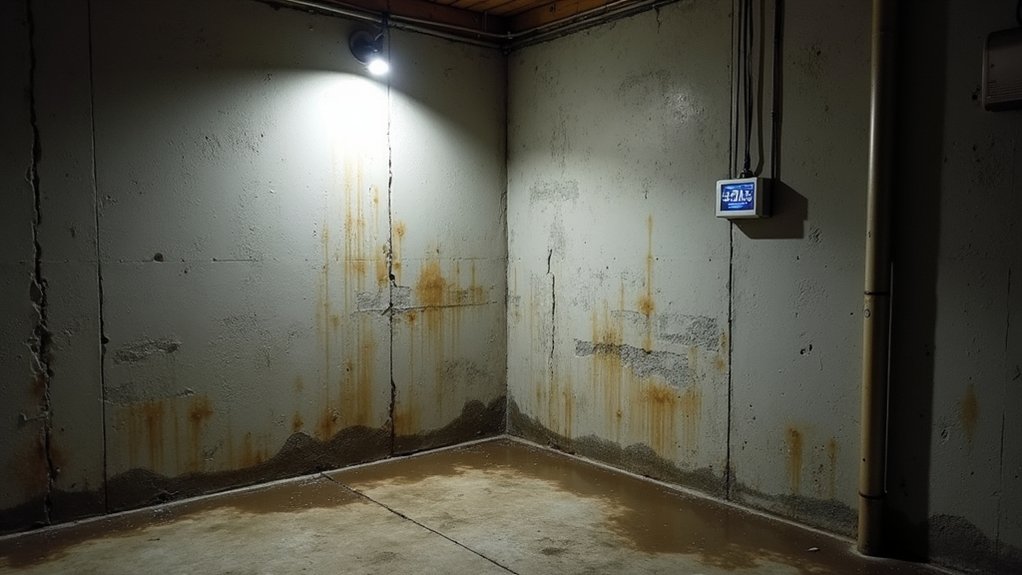
Before you plunge into turning your basement into a cozy bedroom, let’s take a good, hard look at what we’re working with down there! Man, basements can be tricky, but I’ve got your back. Start by checking for dampness—yuck, water damage is a nightmare!
Grab a flashlight and inspect walls for cracks wider than 1/8 inch. Feel floors for moisture; if it’s wet, you’ve got issues! Use a hygrometer ($15 at hardware stores) to measure humidity—above 50% is trouble. I once ignored a damp spot and—boom—mold city! Don’t make my mistake; assess everything now!
2. Plan Bedroom Layout

Even though transforming a basement into a bedroom sounds like a massive task, I’m pumped to help you map out the perfect layout! Let’s make it cozy and functional. Trust me, I’ve had my share of DIY oopsies—like measuring wrong and ending up with a wonky desk!
Start with a sketch. Grab graph paper and mark out your basement’s dimensions—say, 12×15 feet. Note windows and doors.
Next, plan zones:
- Bed area—fit a queen-size near a window.
- Storage—use a 5-foot wardrobe.
- Desk nook—2×4 feet works!
Tweak it till it’s perfect, alright? Wow, we’re rolling!
3. Install Moisture Barriers
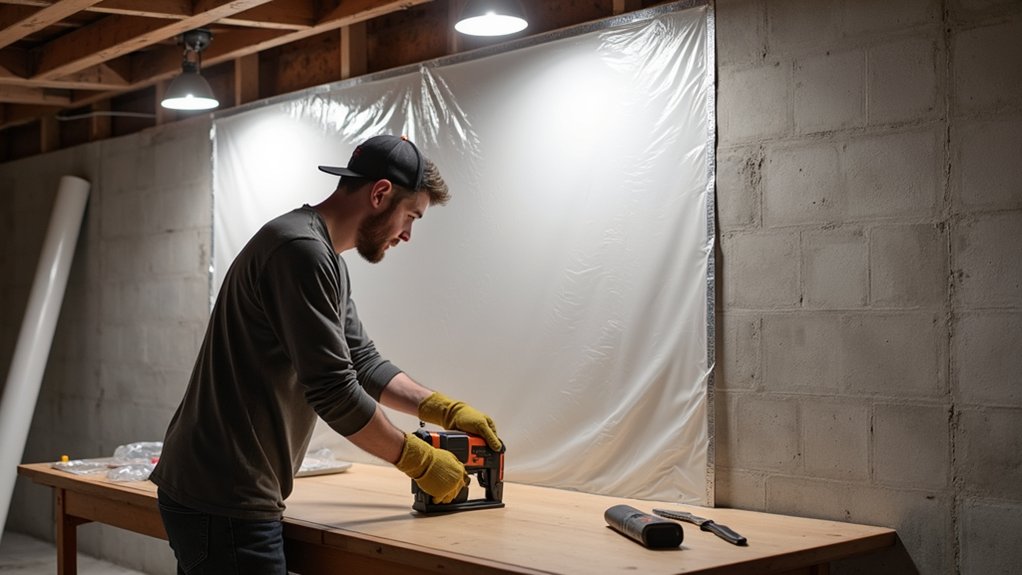
Three key words for any basement project: moisture, moisture, moisture! Ugh, I’ve learned the hard way—dampness can wreck your bedroom dream! Let’s stop it before it starts.
First, assess your walls. Grab a moisture meter (about $20 at hardware stores) and check for wet spots. If you’ve got dampness, don’t panic!
Next, install a vapor barrier:
- Buy 6-mil polyethylene sheeting (around $50 for a 100 sq ft roll).
- Cut it to fit your walls, leaving 6-inch overlaps.
- Secure with waterproof tape. I once skipped this—yep, mold city! Protect your space now; it’s worth it!
4. Add Proper Insulation
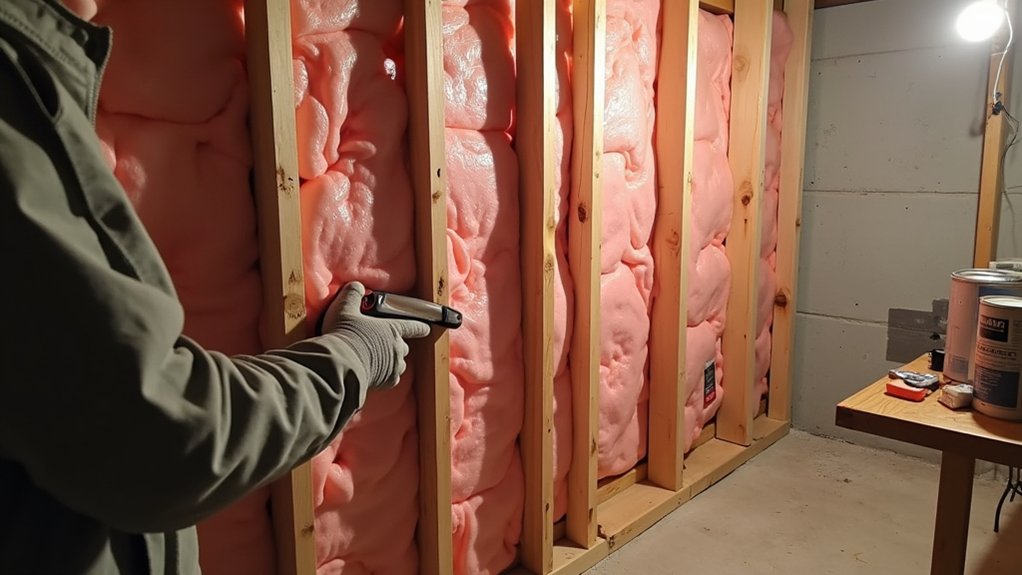
While moisture barriers save your basement from becoming a swamp, let’s talk about keeping it cozy with proper insulation. Man, I’ve shivered through enough cold nights to know this step’s a lifesaver! You’ve gotta make that space warm.
Start with rigid foam board insulation—aim for R-5 or higher. Cut panels to fit snugly against concrete walls using a utility knife (watch those fingers—I’ve got the scars!). Then, seal edges with foam sealant spray.
Next, add fiberglass batts between studs if you’ve got framing. Use R-13 or R-19 for best results. Trust me, don’t skimp here—it’s freezing otherwise!
5. Frame Bedroom Walls
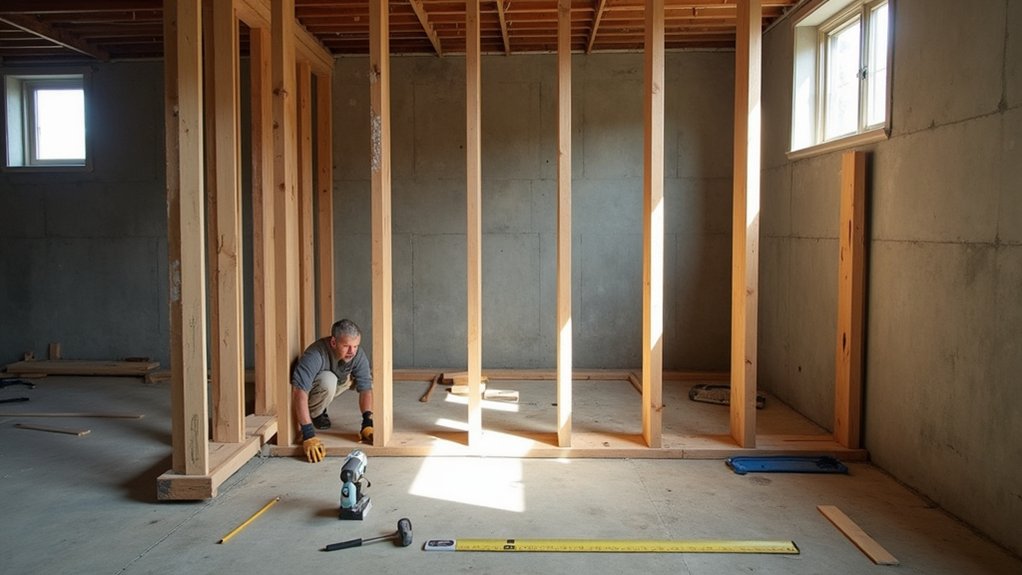
Dive right into framing those bedroom walls in your basement—it’s a game-changer! Man, I’ve tripped over lumber doing this, but it’s worth it! Let’s get started, okay?
First, measure your space. Grab a tape measure and mark out a 10×12-foot area—or whatever fits your basement. Use 2×4 lumber for strength; they’re cheap at about $3 each!
Next, build the frame on the ground:
- Cut top and bottom plates to length.
- Space studs 16 inches apart—measure twice, cut once!
- Secure with 3-inch nails.
Stand it up and anchor to the concrete with a hammer drill. You’ve got this!
6. Install Electrical Wiring
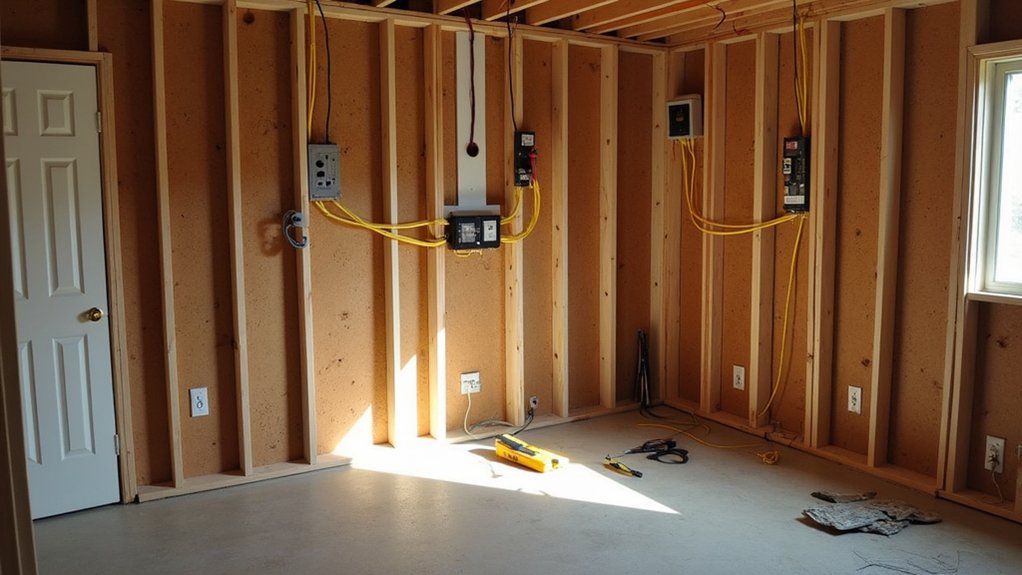
Hey, now that we’ve got those bedroom walls framed up in your basement, let’s get some power flowing with electrical wiring! Man, I’m pumped to see this room light up! But, geez, don’t zap yourself—safety first!
Start by planning your outlets and switches. You’ll need at least two outlets per wall, spaced 12 feet apart, using 14-gauge wire for standard circuits. Grab a voltage tester—cheap at $10!
Steps:
- Turn off the main breaker—trust me, I learned this the hard way!
- Run wires through studs.
- Install outlet boxes—secure them tight! Let’s power up safely!
7. Hang Drywall Panels
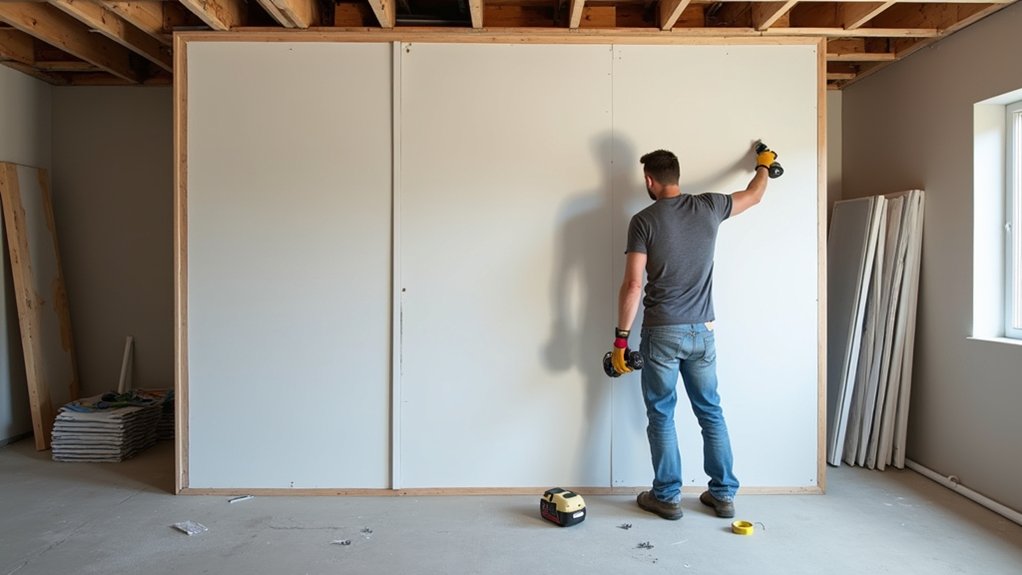
After getting those wires set up, let’s tackle the next big step and hang some drywall panels to shape your basement bedroom! Man, I remember my first drywall job—total chaos, but you’ve got this!
First, measure your walls. Use a tape measure for exact height and width, usually 8 feet by 4 feet for standard panels like Sheetrock. Cut panels with a utility knife—score and snap!
Next, secure ‘em:
- Lift panels with a buddy or drywall lift.
- Screw into studs every 16 inches using 1.25-inch drywall screws.
- Check alignment with a level. Wow, it’s coming together!
8. Paint Bedroom Walls
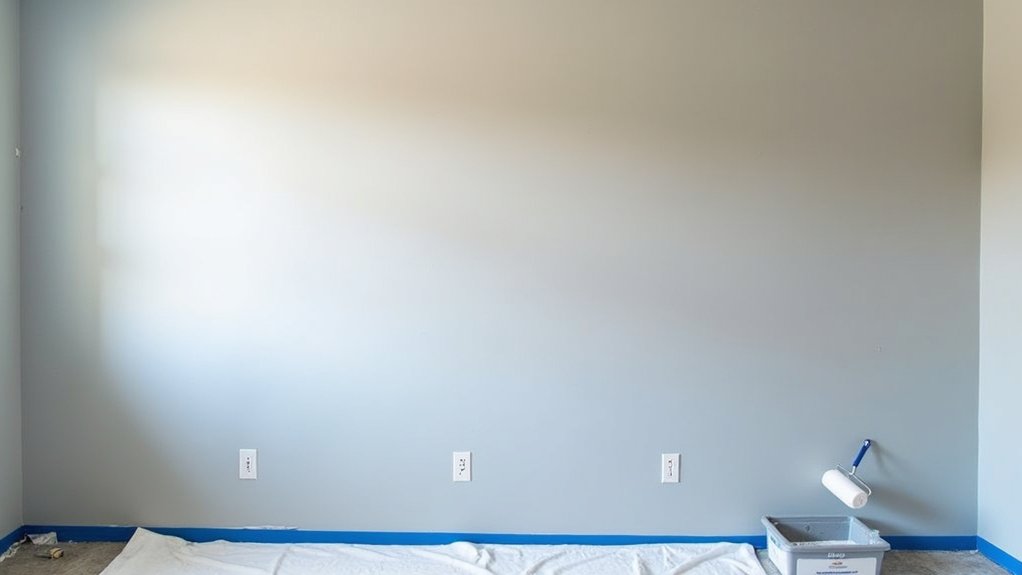
Man, now that those drywall panels are up, let’s get some color on these walls and bring this basement bedroom to life! I’ve messed up paint jobs before, so trust me, preparation’s key. Grab your gear and let’s jump into it!
First, gather supplies: a gallon of interior latex paint (covers about 350 sq. ft.), painter’s tape, a 9-inch roller, and a 2-inch brush. Tape off edges—don’t skip this, or you’ll regret it! Stir paint well. Start with corners using the brush, then roll the walls in 3×3 sections. Two coats minimum, folks! Wow, it’s transforming already!
9. Lay Bedroom Flooring
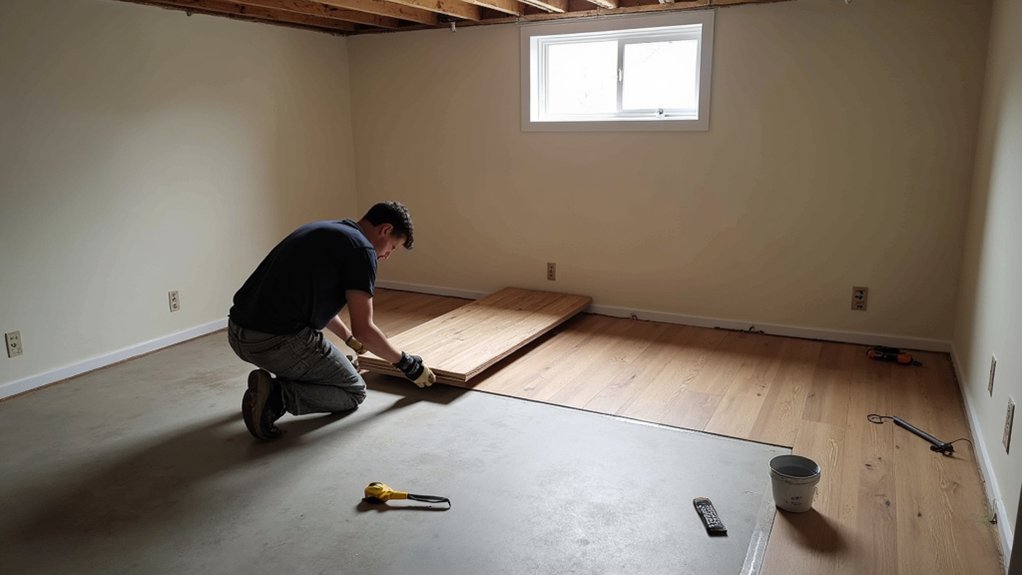
Wow, with those walls painted, let’s tackle the next big step—laying the bedroom flooring! I’m so pumped to see this space transform, and I bet you are too!
First, check your basement for moisture. Ugh, I once skipped this and ended up with warped boards—disaster! Use a moisture meter (under 12% is safe). Then, pick flooring like laminate or vinyl planks (I love Mohawk’s 12mm Oak for $3/sq ft). Measure your room—say, 10×12 feet—and cut pieces with a jigsaw. Lay ‘em down with a click-lock system. Start in a corner; it’s easier! Wow, look at that floor!
10. Add Bedroom Furniture
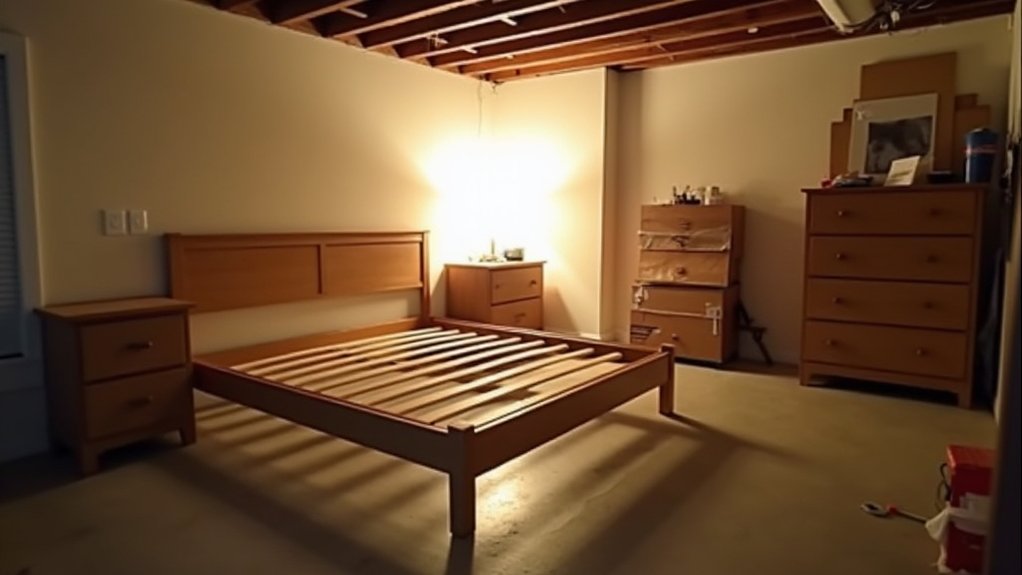
Since the flooring’s all set, let’s plunge into the fun part—adding bedroom furniture to make this basement feel like a real cozy retreat! I’m so excited to see this space come alive. You’ve gotta feel the same, right?
Start with the bed—go for a queen-size frame (about 60”x80”) from a budget store like IKEA. Place it against the longest wall for space. Add a 6-drawer dresser (around 50” wide) for clothes storage. I once jammed a drawer assembling mine—hilarious mess!
Finally, toss in a small nightstand. Keep it simple, and voilà—you’re almost there!

